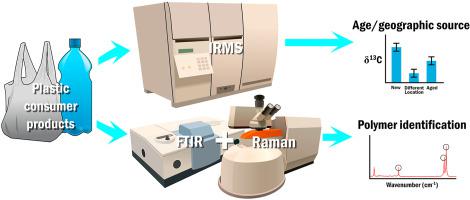Talanta ( IF 5.6 ) Pub Date : 2020-10-15 , DOI: 10.1016/j.talanta.2020.121743 Quinn T Birch 1 , Phillip M Potter 2 , Patricio X Pinto 3 , Dionysios D Dionysiou 1 , Souhail R Al-Abed 4

|
Micro- and nano-scale plastic particles in the environment result from their direct release and degradation of larger plastic debris. Relative to macro-sized plastics, these small particles are of special concern due to their potential impact on marine, freshwater, and terrestrial systems. While microplastic (MP) pollution has been widely studied in geographic regions globally, many questions remain about its origins. It is assumed that urban environments are the main contributors but systematic studies are lacking. The absence of standard methods to characterize and quantify MPs and smaller particles in environmental and biological matrices has hindered progress in understanding their geographic origins and sources, distribution, and impact. Hence, the development and standardization of methods is needed to establish the potential environmental and human health risks. In this study, we investigated stable carbon isotope ratio mass spectrometry (IRMS), attenuated total reflectance - Fourier transform infrared (ATR-FTIR) spectroscopy, and micro-Raman spectroscopy (μ-Raman) as complementary techniques for characterization of common plastics. Plastic items selected for comparative analysis included food packaging, containers, straws, and polymer pellets. The ability of IRMS to distinguish weathered samples was also investigated using the simulated weathering conditions of ultraviolet (UV) light and heat. Our IRMS results show a difference between the δ13C values for plant-derived and petroleum-based polymers. We also found differences between plastic items composed of the same polymer but from different countries, and between some recycled and nonrecycled plastics. Furthermore, increasing δ13C values were observed after exposure to UV light. The results of the three techniques, and their advantages and limitations, are discussed.
中文翻译:

用于微塑料表征的同位素比质谱和光谱技术
环境中的微米级和纳米级塑料颗粒是由较大塑料碎片的直接释放和降解产生的。相对于大尺寸塑料,这些小颗粒因其对海洋、淡水和陆地系统的潜在影响而受到特别关注。尽管微塑料(MP)污染已在全球各地理区域得到广泛研究,但其起源仍存在许多问题。人们认为城市环境是主要的影响因素,但缺乏系统的研究。由于缺乏表征和量化环境和生物基质中 MP 和较小颗粒的标准方法,阻碍了人们在了解其地理起源和来源、分布和影响方面取得进展。因此,需要开发方法并使其标准化,以确定潜在的环境和人类健康风险。在这项研究中,我们研究了稳定碳同位素比质谱 (IRMS)、衰减全反射 - 傅里叶变换红外 (ATR-FTIR) 光谱和微拉曼光谱 (μ-拉曼) 作为表征常见塑料的补充技术。选择进行比较分析的塑料制品包括食品包装、容器、吸管和聚合物颗粒。还使用紫外线 (UV) 光和热的模拟风化条件研究了 IRMS 区分风化样品的能力。我们的 IRMS 结果显示植物源聚合物和石油基聚合物的 δ 13 C 值之间存在差异。我们还发现由相同聚合物组成但来自不同国家的塑料制品之间以及一些再生塑料和非再生塑料之间存在差异。 此外,暴露于紫外光后观察到δ 13 C值增加。讨论了三种技术的结果及其优点和局限性。











































 京公网安备 11010802027423号
京公网安备 11010802027423号